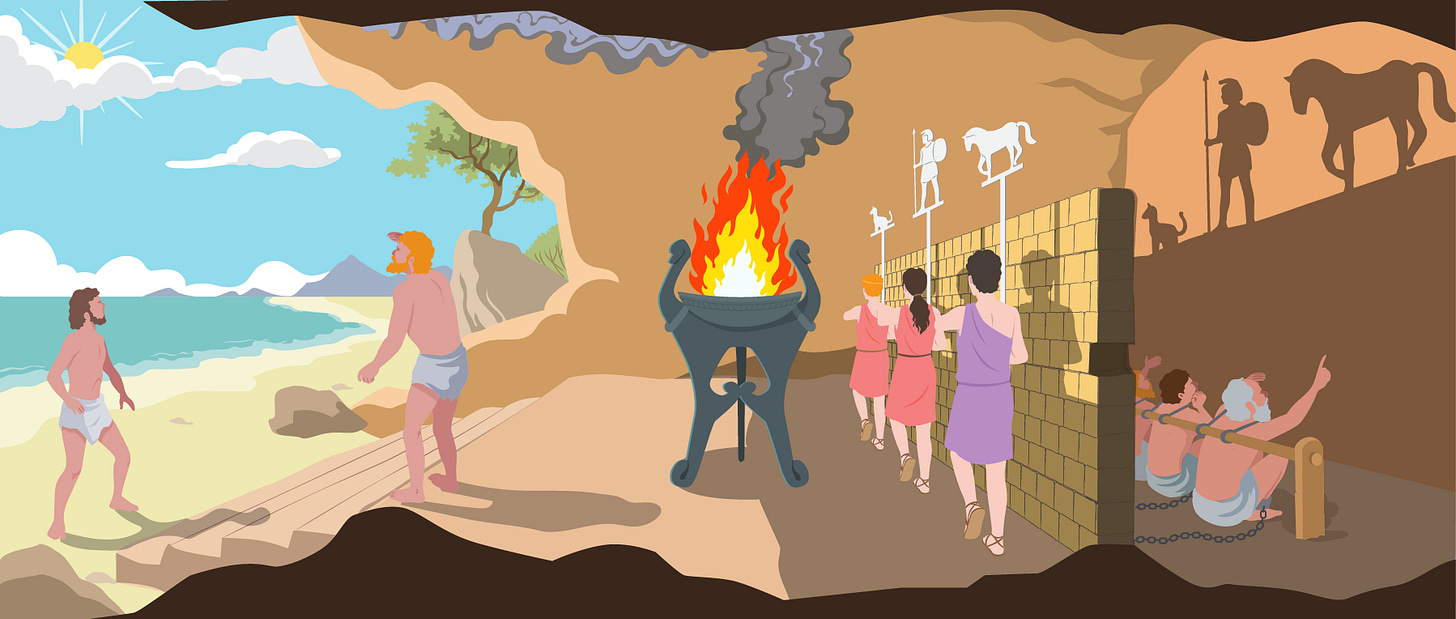In the Allegory, Plato describes the journey to enlightenment and truth as a challenge. Even more challenging is then attempting to help others “see the light.”
“Imagine a cave where people have been imprisoned since childhood. These prisoners are chained in stationary positions and forced to gaze at the wall in front of them. Behind the prisoners is a fire, and between the fire and the prisoners is a partition, behind which people walk carrying objects. These objects cast shadows onto the wall the prisoners gaze at. This is the prisoners reality and they know nothing else. The sounds of the people talking echo off the walls; the prisoners believe these sounds come from the shadows.”1
Envision then a prisoner is freed. "Suppose... that someone should drag him... by force, up the rough ascent, the steep way up, and never stop until he could drag him out into the light of the sun."2 The prisoner would be upset and overwhelmed.
His eyes adjust to the sun and he can see the new reality. He looks at the sun and is able to come to a conclusion of what it is. He sees the moon and the stars and is forever changed.
The free prisoner thinks the world outside the cave is superior to the world he experienced in the cave facing the wall. Upon reentering the cave, he will attempt to share his experience with the other prisoners. "He would bless himself for the change, and pity the other prisoners." He would want to bring his fellow cave dwellers out of the cave and into the sunlight. The allegory concludes with the prisoners refusing his testimony and choosing to remain imprisoned. They are content with their current reality and do not wish to become enlightened.
"Once we’ve accumulated knowledge, we can’t go back to ignorance."3



